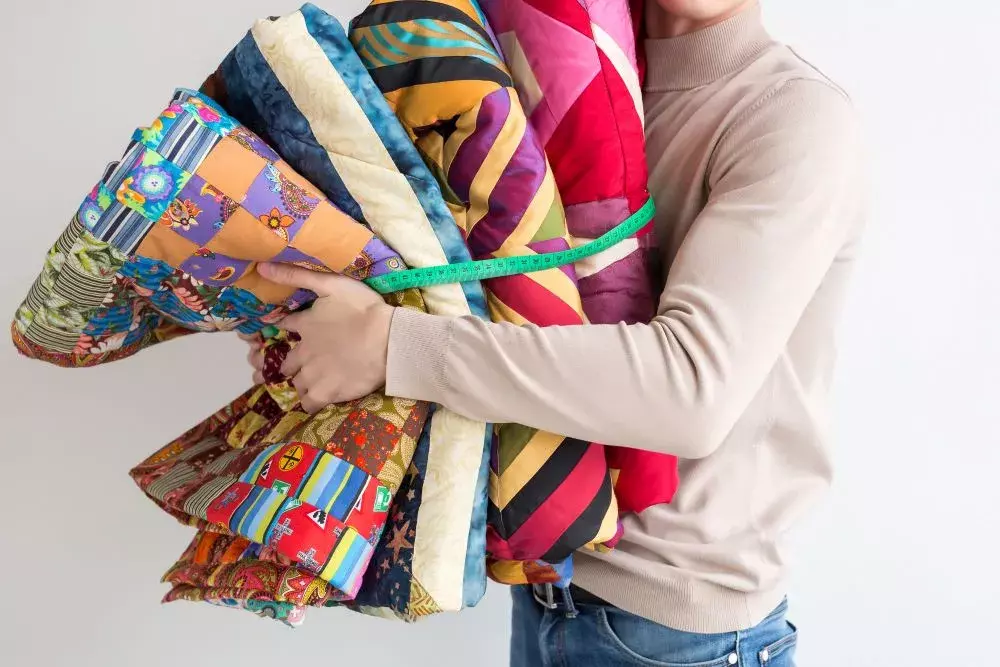Quilting With a Walking Foot: Tips and Techniques for Beautiful Quilts
2023-10-17
Trying out quilting is an exciting way to step up your sewing skills and create something you can enjoy for years to come. One of the most important details to learn about quilting is the type of presser feet to use. For quilting, a walking foot creates the most reliable stitches on quilt material.
Here are some beginner-friendly techniques you can apply to your quilt using your sewing machine and walking foot.
Best Walking Foot Techniques for Quilting
When you use a sewing machine and walking foot rather than sewing by hand, you can ensure that any geometric shapes or designs throughout your quilt will have perfectly straight stitch lines. Try these beautiful — and reliable — techniques with your walking foot:
Center-Focus
With a center-focused quilt, your lines all move toward the center of your quilt, creating a crisp, geometric feel. You won’t have to worry about burying ends with a center-focus quilt, so this style can be done more quickly than others.
Before you set up your sewing machine, use tape to create straight diagonal lines from the corners and sides of your fabric toward the middle point. Stitch each segment separately, and pivot to finish the line once you reach the middle point. Backstitching at the beginning and ends where binding will be added is recommended.
Segmentation
Segmentation uses a similar idea to center-focus quilting, except there is no center focus. You simply decide on a few areas on the quilt where you will have groupings of continuous lines that extend in one direction, creating the overall illusion of overlapping sections.
Create your segments using tape or marker, then stitch along the lines. Depending on the fabric, you will need to channel quilt some of your segments. Also, keep in mind that you will need to bury the ends of each line where they intersect with another section or the edge.
Channel Quilting
Speaking of channel quilting, what exactly is it? This quilting technique is very simple — it means stitching lines across your quilt that run parallel to the width of your fabric. These lines make quilts look long and large, adding a subtle yet palpable texture to the surface of your quilt.
If you’re just getting started with quilting, channel quilting is a good way to go. It doesn’t require much pre-planning in terms of design, and the accuracy of your walking foot will make it easy to stitch stable, even lines.
With channel quilting, you don’t typically need to plan out your lines with tape or markers. Simply create your first straight light along a seam already present in the fabric. Then, use a guide attachment for your sewing machine and walking foot to create even spacing between your lines.
Ripple Effect
The ripple effect can also be referred to as echoing the piecing. Many quilt tops have blocks already in place, and you can “echo” those blocks in your stitch design, starting from the middle and working outwards. This creates a ripple effect from the center of your quilt expanding out, making your quilt look big and aesthetically pleasing.
Create lines with tape or a marker to follow as you stitch, guided by the piercing. Pivot with your needle down whenever you need to change directions as you stitch. Using the guide attachment on your walking foot, continue stitching outwards until your design is finished.
Loose Squiggles
What if you want a more free-flowing design rather than a tight, geometric one? You can use a loose squiggle design that stretches along the width of your quilt to create texture and visual interest.
To create this design, slowly turn your fabric back and forth as you stitch. Make your movements small and gentle so your walking foot can keep up. If you start your squiggles on the quilt’s edge, add backstitches to secure them.
Find the Quilting Tools You Need at GoldStar Tool
Having the right tools is vital when creating incredible sewing projects at home. Find everything you need to DIY in style, including sewing machines, presser feet, needles, thread, and more, at GoldStar Tool today.





